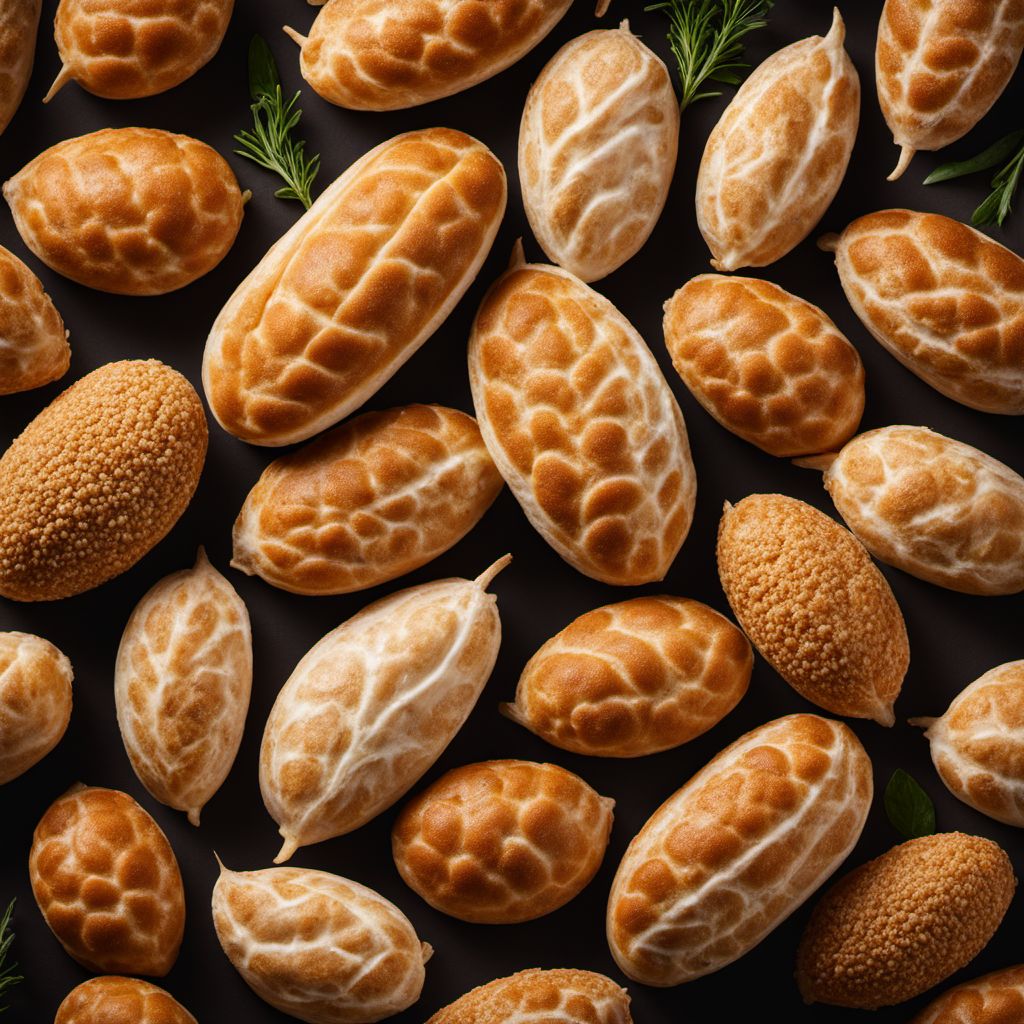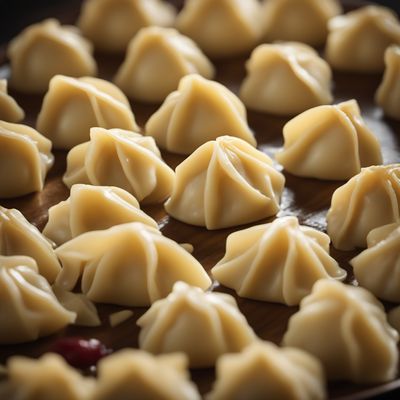
Ingredient
Fresh stuffed durum pasta
Delightful Pillows of Flavor: Exploring Fresh Stuffed Durum Pasta
Fresh stuffed durum pasta is made from durum wheat semolina and eggs, resulting in a firm and chewy texture. The pasta is carefully rolled and filled with a variety of delicious fillings, such as cheese, vegetables, or meat. Its delicate and tender exterior encases a flavorful and satisfying interior, creating a delightful contrast of textures. The vibrant colors and intricate shapes of the stuffed pasta make it visually appealing, adding an element of elegance to any dish.
Origins and history
The origins of stuffed pasta can be traced back to ancient times, with variations found in different cultures around the world. However, it was in Italy where stuffed pasta gained prominence and became an integral part of Italian cuisine. The art of making fresh stuffed pasta has been passed down through generations, with each region in Italy having its own unique fillings and shapes. Today, fresh stuffed durum pasta continues to be a beloved culinary tradition in Italy and has gained popularity worldwide.
Nutritional information
Fresh stuffed durum pasta is a good source of carbohydrates and protein. It provides essential nutrients such as iron, B vitamins, and dietary fiber. The nutritional content may vary depending on the filling used.
Allergens
Common allergens associated with fresh stuffed durum pasta include wheat, eggs, and dairy (if cheese is used in the filling).
How to select
When selecting fresh stuffed durum pasta, look for packages that are tightly sealed and free from any signs of moisture or mold. The pasta should have a firm texture and the fillings should be evenly distributed. Additionally, check the expiration date to ensure freshness.
Storage recommendations
To maintain the freshness and quality of fresh stuffed durum pasta, it is best to store it in the refrigerator. Place the pasta in an airtight container or wrap it tightly in plastic wrap to prevent drying out. Use within a few days for optimal taste and texture.
How to produce
Producing fresh stuffed durum pasta at home requires some skill and practice. Amateur cooks can start by making their own pasta dough using durum wheat semolina and eggs. The dough is then rolled out and cut into squares or circles. The filling is prepared separately and spooned onto the pasta dough. The edges of the dough are sealed, and the pasta is cooked until al dente.
Preparation tips
Fresh stuffed durum pasta can be prepared in various ways, such as boiling, baking, or pan-frying. Boiling is the most common method, where the pasta is cooked in salted boiling water until it floats to the surface. To prevent the filling from leaking out during cooking, it is important to seal the edges of the pasta properly. Serve the cooked pasta with your choice of sauce or simply toss it with olive oil and herbs for a light and flavorful dish.
Culinary uses
Fresh stuffed durum pasta is a versatile ingredient that can be used in a wide range of dishes. It is commonly used in traditional Italian recipes such as ravioli, tortellini, and agnolotti. The pasta can be served with a variety of sauces, from classic tomato-based sauces to creamy cheese or herb-infused sauces. It can also be added to soups or baked in casseroles for a comforting and satisfying meal.
Availability
Fresh stuffed durum pasta is commonly available in Italian specialty stores, gourmet food markets, and some supermarkets. It is also possible to find it in restaurants that specialize in Italian cuisine.
